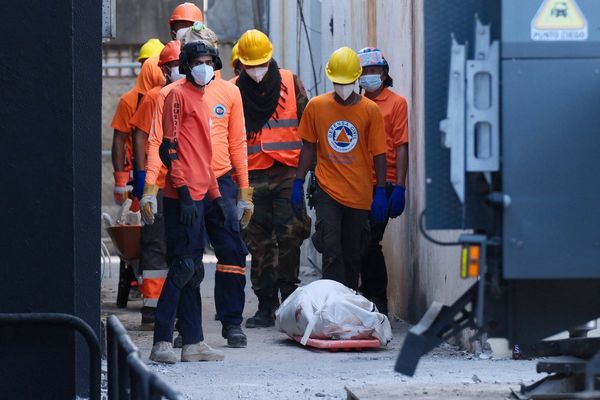
In 1990, Larry Towell began photographing a Mennonite family who lived in a dilapidated house down the road from him in Lambton County, Ontario. “I didn’t go looking for them,” he says. “I came across them right in my own back yard.”
Mennonites are a nonconformist Christian denomination dating back to the 16th century. They have traditionally lived apart from mainstream society in self-sustaining colonies, the most conservative communities resisting all forms of modernisation, including machinery and electricity. In the long, evocative essay he wrote for his photo book, The Mennonites, first published in 2000, and now about to be reissued in reedited form, Towell describes how the members of the Old Colony sect he encountered had travelled there from a long-established community in La Batea, Mexico, in search of seasonal work in the fields and orchards of Ontario. “I liked them a lot because they seemed otherworldly and therefore completely vulnerable in a society in which they did not belong and for which they were not prepared. Because I liked them, they liked me and although photography was forbidden, they let me photograph them. That’s all there was to it.”
Having befriended and gained the trust of one family, he was slowly introduced to others, sometimes taking his turn at the wheel as they travelled back and forth from Canada to Mexico. “I guess I identified with them to a degree,” Towell tells me over the phone from his home in Ontario. “They were rural, they were traditionalists and they were pacifists. They did not compromise and, because of that, they did not belong.”

Kent County, Ontario,1996.
Towell’s intimate black-and-white images capture the simplicity and hardship of the Mennonite way of life, the austerity of their religious beliefs echoed in the wind-whipped landscapes where they settled. Many of the people he made portraits of had never been photographed before, a testament to the bond he built with them over time. “Everyone was accepting to a degree,” he says, “but you’re not part of their community, so mostly they leave you alone.”
His photographs of Mennonite families are often more redolent of life on the US prairies during the dustbowl years of the 1930s. The children, wide-eyed and tousle-haired, are dressed like their parents and grandparents in check shirts and weatherbeaten denim dungarees or long skirts and headscarves. Inside their houses, everything is spartan and functional: plain wooden chairs, handmade children’s cots, work benches and cupboards. Outside, men and women work the land, scything hay and tending to livestock, travelling to and from the fields in horse-drawn carts and squat caravans. In one arresting image, a child holds aloft a puppy next to the bleeding carcass of a newly slaughtered pig. In another, rows of young schoolgirls sit poised and attentive, chalk in hand, over slate boards.
In one or two photographs, his reluctant subjects, young and old, cover their faces from the inquiring gaze of his camera. Elsewhere, though, there are traces of creeping modernity: bottles of Coca-Cola on a table top; young men passing beers to each other after a day’s work; trucks and farm machinery where, not long before, there were only scythes, horse and carts.

La Batea Colony, Zacatecas, Mexico, 1999.
Over the course of the 1990s, Towell photographed 23 Mennonite communities at a time of great change and upheaval. “The first time I went to Mexico, all of the communities I visited were traditional, which meant there was no electricity and no vehicles apart from tractors with steel wheels. By the time I was done, they had nearly all adapted to some degree. The evolution occurred in part because the Mennonites who came to Canada had to adapt to life there and, when they returned, they brought modernity back with them.” His images have since attained a historical resonance as a document of a people caught between adherence to their biblical beliefs and the need to change in order to survive.

Chavé Colony, Campeche, Mexico, 1996.
Towell now spends much of his time on his 30-hectare sharecropper farm in Lambton County. He became a photographer in 1984, having previously taught poetry and folk music, which remain abiding interests. He tells me he is about to release a triple album of original folk songs based on the places he has photographed over the last four decades, which include Nicaragua, El Salvador, Gaza and Afghanistan. When I speak to him, he is packing for a flight to Poland the following day in the hope of entering Ukraine to cover the war there. “I’m 68 and I don’t like running around much any more, but it’s in the blood,” he tells me. “I don’t have an assignment and I don’t have a plan, but we’ll see what happens when I get there. At this point, when history is upon us, that’s all you can do.”

Durango Colony, Durango, Mexico, 1994.
Towell sees the Mennonites project as having an affinity with another body of work he made even closer to home: The World from My Front Porch, an intimate study of family and place that was published in 2008. One of the photographs from it, Isaac’s First Swim, featured on a Canadian postage stamp in 2015. “Both series came out of the same need,” he says, “which was to document, to a degree, what was familiar. The same instinct is behind the poetry I write and the music I make.”
His work, whether from the world’s conflict zones or his own locality, is characterised by deep looking and a desire to evoke the universal through the particular. “The Mennonites in my photographs originally came from Ukraine and Russia in the 19th century,” he says. “The scarves the women are wearing are from Ukraine. It’s all connected.”







